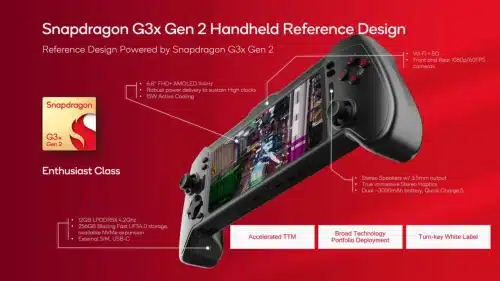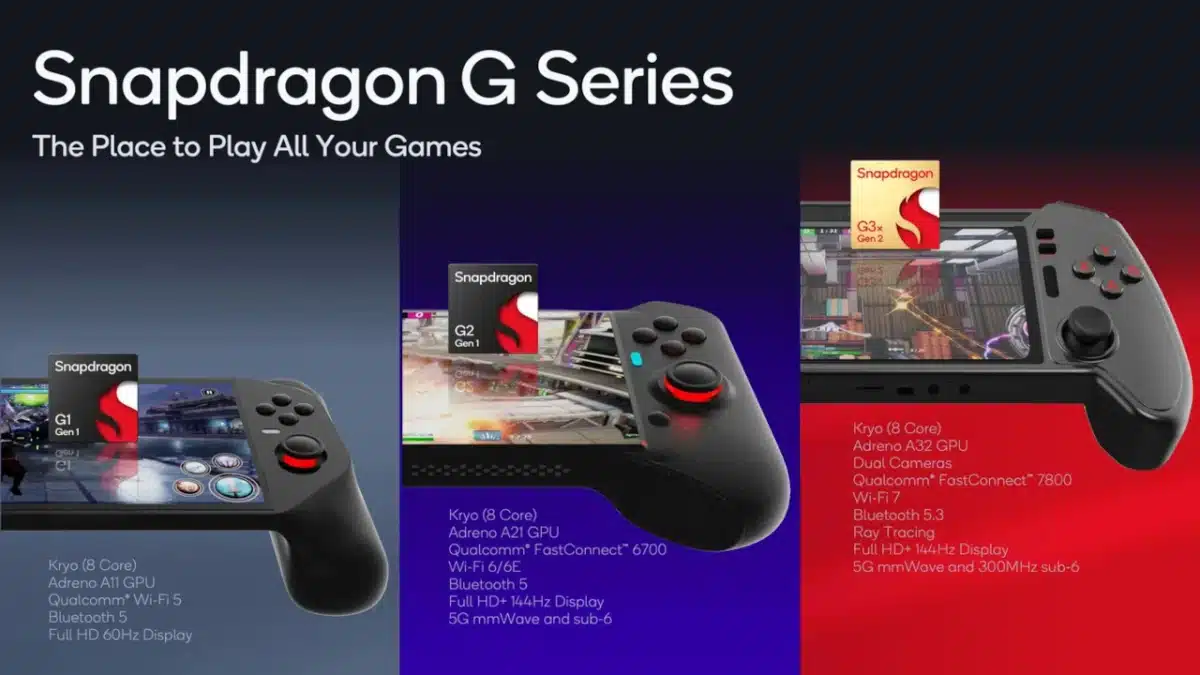Qualcomm is showcasing its prowess beyond smartphone chipsets with the unveiling of the Snapdragon G series, tailor-made for mobile gaming. Let’s dive into the details of this new chipset lineup.

What we know of the Snapdragon G series
In a significant move, Qualcomm has introduced three new portable and mobile gaming chipsets: the Qualcomm G1, Qualcomm G2, and Qualcomm G3x Gen 2. Notably, the G3x Gen 2 is the successor to the G3x that powers the Razer Edge. However, Qualcomm asserts that this isn’t just a minor upgrade; it’s a full-fledged sequel with double the GPU performance, promising a significant leap in gaming capabilities.
Mithyn Chandrasekhar, Qualcomm’s senior director of product management, emphasized the evolving gaming landscape. He highlighted that while dedicated handheld gaming devices offer a premium gaming experience, modern gamers seek cross-device compatibility, whether it’s consoles, PCs, cloud services, or Android platforms. Qualcomm envisions its new Snapdragon G series devices as the ultimate hub for gaming, enabling users to enjoy their favorite titles across various ecosystems.
These new Snapdragon processors are strategically designed with Android gaming in mind. However, Qualcomm is already exploring avenues to bring PC and console gaming experiences to handheld devices powered by its chipsets, further expanding gaming possibilities.
The entry-level Snapdragon G1 Gen 1 is tailored for mobile devices with more modest specifications. Optimized for cloud gaming and remote console and PC gaming, it’s equipped to handle 1080p@60fps gameplay. Additionally, it’s important to note that Qualcomm’s gaming chipset supports Wi-Fi 5, enhancing connectivity for an immersive gaming experience.
The Snapdragon G2 Gen 1 processor strikes a balance, catering to both high-end phones without specific cooling systems and low-end smartphones optimized for cloud gaming.
Qualcomm’s innovative approach to the Snapdragon G series reinforces its commitment to the dynamic gaming landscape. As the industry evolves and gaming transcends platforms, these chipsets are poised to redefine the gaming experience, making it seamless and captivating across diverse devices and ecosystems.
